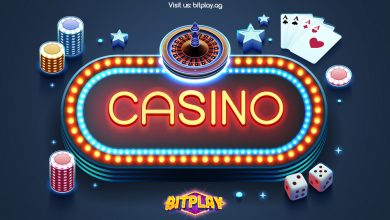Lucky Slots: Advancement of Technology

Slot machines have been a staple of the gambling industry for over a century. These iconic machines have evolved in numerous ways over the years, and a significant driving force behind their transformation has been the advancement of technology. In this article, we’ll explore how technology has shaped the world of lucky slots, from their humble mechanical beginnings to the modern, high-tech marvels that entertain millions of players worldwide.
Lucky Slots: The Birth of Slot Machines
The history of slot machines dates back to the late 19th century, and the very first slot machine was a far cry from what we see in modern casinos. In 1895, Charles Fey, a mechanic from San Francisco, introduced the Liberty Bell, the world’s first true slot machine. The Liberty Bell was a mechanical marvel, featuring three spinning reels with five symbols: horseshoes, diamonds, spades, hearts, and the iconic cracked liberty bell.
Fey’s invention was a hit, and it quickly spread to bars, saloons, and even some stores. Players would insert a nickel, pull a lever to spin the reels, and hope for a winning combination. It was a simple yet thrilling concept that captivated people’s imaginations. The technology behind these early machines was entirely mechanical, with a system of gears and levers determining the outcome.
Lucky Slots: The Electromechanical Era
As the popularity of slot machines continued to grow, so did the demand for more innovation. In the 1960s and 1970s, a significant technological advancement arrived in the form of electromechanical slots. These machines combined both mechanical and electrical components to enhance gameplay and increase the possibilities for winning. The introduction of electrical circuits allowed for more intricate features, such as flashing lights and noise effects when players hit a winning combination.
One of the most famous electromechanical slots was Bally’s Money Honey, introduced in 1963. Money Honey featured an automatic payout system, a significant improvement over the previous machines that required an attendant to make manual payouts. This innovation made the gaming experience smoother and more convenient for players.
Lucky Slots: The Digital Revolution
The 1970s brought about a major turning point in the history of slot machines. The digital revolution was underway, and slot machines were quick to adopt the new technology. These machines, known as video slots, replaced the physical spinning reels with a digital display. This transition allowed for more flexibility in terms of game design and a broader range of themes and features.
International Game Technology (IGT), a leading manufacturer of gaming machines, played a pivotal role in the digital transformation of slots. In 1975, they introduced the Fortune Coin video slot, which used a modified 19-inch Sony TV for its display. This groundbreaking technology paved the way for the modern video slots we see in today’s casinos. Digital slots brought new levels of excitement with their bonus rounds, animations, and creative themes.
Lucky Slots: The Internet and Online Slots
The internet changed the way people access and enjoy various forms of entertainment, including lucky slots casino games. Online slots emerged as a digital counterpart to their land-based counterparts. The advantage of online slots lies in the convenience and accessibility they offer. Players no longer need to visit a physical casino to enjoy their favorite casino games; they can do so from the comfort of their homes or even on the go.
Lucky Slots rely on advanced software and Random Number Generators (RNGs) to ensure fair play. RNGs generate random sequences of numbers, which determine the outcome of each spin. This technology guarantees that the results are entirely based on chance, and the house edge remains consistent.
Moreover, online slots have taken advantage of various technological advancements, such as enhanced graphics and sound effects. Some online slot games even feature 3D graphics and immersive soundscapes to create a more engaging and entertaining experience for players.
Mobile technology has further expanded the accessibility of online slots. With the advent of smartphones and tablets, players can now enjoy their favorite slot games while on the go. Mobile slots have become incredibly popular due to their convenience, and gaming software providers have optimized their online slot games for smaller screens, ensuring a seamless experience for mobile users.
Lucky Slot: The Rise of Video Slots and Themed Games
Video slots have become the dominant form of slot machine in both land-based and online casinos. These machines are known for their vibrant graphics, immersive sound effects, and entertaining bonus features. The advancement of technology has allowed online gambling game developers to create slot games based on popular themes, movies, and TV shows. This has attracted a wider audience and made slot machines more appealing to people who might not have been interested in traditional slots.
Licensed slot games, featuring characters and settings from well-known franchises like Star Wars, Game of Thrones, and Marvel Comics, have become especially popular. These themed games bring the world of entertainment and pop culture to the casino floor, making the experience more relatable and enjoyable for players.
Video slots also feature a wide range of bonus rounds and special features, from free spins and interactive mini-games to cascading reels and expanding wilds. These innovative features not only enhance gameplay but also increase the chances of winning, keeping players engaged and entertained.
Lucky Slot: The Role of Big Data and Analytics
In recent years, the casino industry has embraced big data and analytics to enhance the player experience. Through data collection and analysis, casinos and game developers gain valuable insights into player behavior and preferences. This information allows them to tailor their offerings, including slot games, to better suit the desires of their target audience.
For example, casinos can use data to determine which slot machines are the most popular and which ones need adjustments. They can identify peak playing times and offer promotions or special events to attract more players during slower periods. Additionally, data-driven marketing efforts can help casinos reach out to specific demographics with personalized promotions and incentives.
Big data also plays a role in enhancing player safety. Through data analysis, casinos can detect patterns of problem gambling and provide intervention or support to individuals who may be at risk. This responsible gaming approach helps create a safer and more enjoyable gambling environment for all players.\
Lucky Slot: Virtual Reality and Augmented Reality

The future of slot machines holds exciting possibilities with the integration of virtual reality (VR) and augmented reality (AR) technologies. VR slots provide an immersive experience by placing players in a virtual casino environment where they can interact with the game in a three-dimensional space. This technology makes it feel like you’re physically sitting in front of a slot machine, spinning the reels and enjoying the sights and sounds of a casino without leaving your home.
Augmented reality, on the other hand, overlays digital elements on the real world. Imagine playing a slot machine on your smartphone while sitting at a real slot machine in a casino. AR technology can enhance the physical slot machine with interactive graphics and animations, adding a layer of entertainment and interactivity to the online gaming experience.
While VR and AR slots are still in their infancy, they hold great potential for the industry, offering a new level of immersion and engagement for players. The technology is continuously evolving, and we can expect to see more developments in this space in the coming years.
Conclusion
The advancement of technology has significantly shaped the world of slot machines, from their mechanical origins to the high-tech wonders we see today. Slot machines have come a long way from the Liberty Bell to the immersive, interactive games of the 21st century. The integration of technology has made these games more accessible, exciting, and entertaining for players.
FAQ
1. When did the digital revolution in slot machines begin?
- The digital revolution in slot machines began in the 1970s with the introduction of video slots, which replaced mechanical reels with digital displays.
2. How do online slots work, and what role does technology play in them?
- Online slots rely on software and Random Number Generators (RNGs) to determine outcomes. Technology enables themes, graphics, and accessibility for online players.
3. What impact has mobile technology had on slot machines?
- Mobile technology has made slots accessible on smartphones and tablets, allowing players to enjoy their favorite games on the go.




